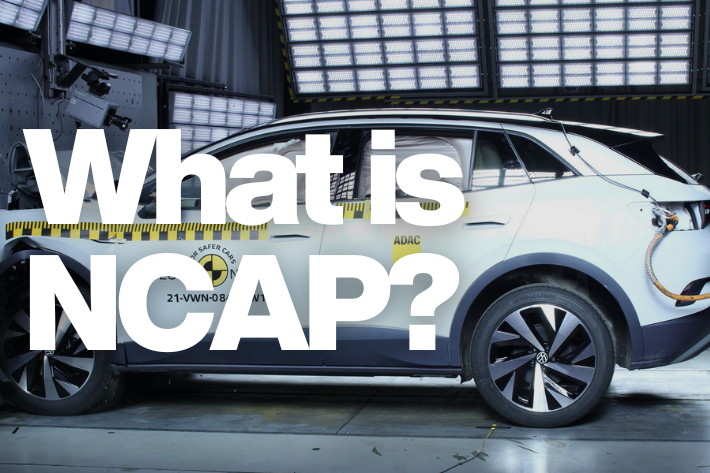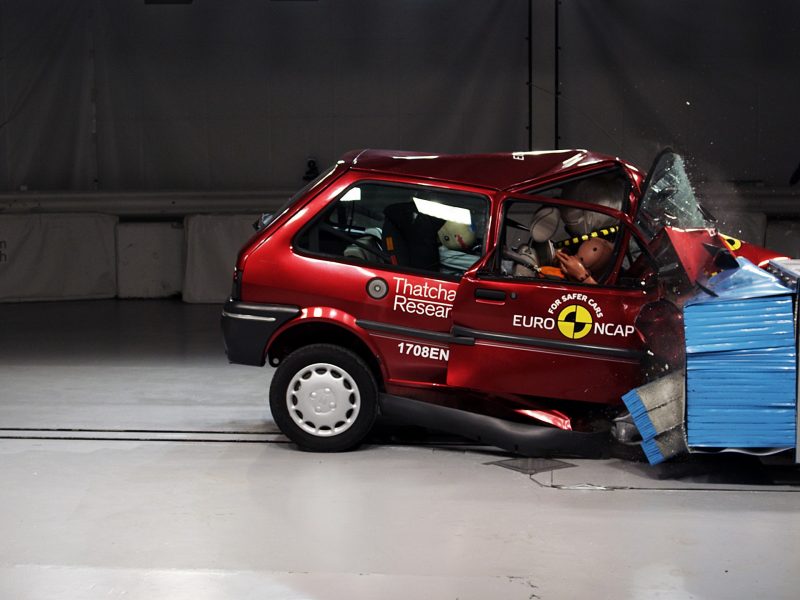What is NCAP?

NCAP refers to Euro NCAP, the ‘New Car Assessment Programme’ which is one of the world’s leading independent vehicle safety and crash test experts. Euro NCAP independently crash tests and assesses new cars on how safe they really are.
The NCAP idea goes back to 1996, when the UK’s National Transport Laboratory started collaborating with its Swedish counterpart, the Swedish Road Administration, to independently crash-test a batch of small new hatchbacks to see if they were as safe as their makers claimed.
The programme quickly claimed its first scalp — in that first batch of tests, the Rover 100 (which had previously been called the Metro) performed so poorly in the frontal impact test, that it was taken off sale. The images from that particular test are incredibly sobering — the little Rover essentially folded in half.

Soon after, the NCAP idea received the backing of several more European governments, and eventually the entire EU, as well as the likes of the Fédération Internationale de l’Automobile — the FIA, which as well as being the governing body of world motorsport is also a global motoring organisation. Indeed, it was then-FIA president, the oft-controversial Max Mosley, who did a great deal to push the whole NCAP concept forward, and to turn it into the industry standard that it has become. NCAP is now administered by a whole host of national and international safety and vehicle technology organisations, including Germany’s ADAC, and the Automobile Club D’Italia.
All new cars have to pass a series of strict type-approval tests before they can be legally sold in Europe. Those tests include safety and crash tests, but the NCAP tests go much further, crashing cars — in a laboratory environment — at higher speeds than the type-approval tests, and also looking at the potential impact upon pedestrians and cyclists, as well as – increasingly — at a car’s electronic safety systems.
The standards have become stricter every year – hence why cars that received full five-star ratings in the past might, today, get only one star, or maybe none at all. There has been, in recent years, an increased focus on electronic safety systems too, which has come in for criticism from some quarters, as it has led to the introduction of many beeps and bongs which in themselves can now be seen as a distraction from driving.

Nonetheless, there’s no question that the NCAP test has saved lives, simply by encouraging car makers to build safer cars, in the search of that coveted five-star rating. Renault was the first to achieve a full five-star score from NCAP, with the second-generation Renault Laguna of 2000. Now, it’s rare that any car would not manage a full five stars, and indeed it can be quite the scandal if a new car falls short.
The NCAP tests are brutal and require multiple versions of each car being tested. Usually, these will be the best-selling model in each range, so that each test result is as representative as possible of the majority of cars that will be sold.
The headline test — and the one that destroyed that Rover 100 back in 1996 — is the head-on crash into an offset deformable barrier at 50km/h. This test is designed to replicate a head-on collision with another car, and it is staggeringly violent to watch.
Next up is a collision at the same speed into a full-width solid barrier, which puts seatbelts and airbags to the ultimate test. Then there’s the side-impact test, with a barrier moving at 60km/h, driven straight into the side of the test car. That’s followed by a 32km/h sideways impact into a rigid pole, meant to replicate hitting a telephone pole or streetlight. There’s also a specific rear-impact test to check for whiplash protection.

Then there are the pedestrian and cyclist tests, which check to see how the front structure of the car helps to protect vulnerable roads users with tests for head, pelvis and lower leg impacts, as well as checking how good the car’s cameras and radar are at detecting a pedestrian or cyclist and automatically slamming on the brakes.
That autonomous emergency braking (AEB) test forms part of the car’s ‘Safety Assist’ rating, which checks how well that AEB system works, along with the driver and occupant status monitor, the speed limit checking system and the lane-keeping steering.
Finally, each car is checked for how easy it is for emergency services to extract a wounded driver or passenger, and how well the car’s ‘e-call’ emergency phone system works.
It’s an exhaustive set of tests, and at the end a car will receive an overall star rating out of five, while it will be given a percentage rating in four categories — adult occupant protection, child occupant protection, vulnerable road user protection and safety assist systems. The best cars will score at least 85 per cent in those individual categories, although a 75 per cent score in safety assist is still considered good.
While a five-star car obviously meets and exceeds all of NCAP’s criteria, it’s interesting to note that a car which scores zero stars can actually still be legally sold as, technically, it still meets the more basic requirements of the type-approval tests. Would you want to buy one though?
Last year, the best-performing cars in the NCAP tests included the Mercedes-Benz E-Class, which was named the best overall performer, while the Mazda CX-80 took home the best SUV award, and the Skoda Superb shared its best family car award with the Volkswagen Passat. The small SUV award went to the Chinese-made Zeekr X, which isn’t yet sold in Ireland.
